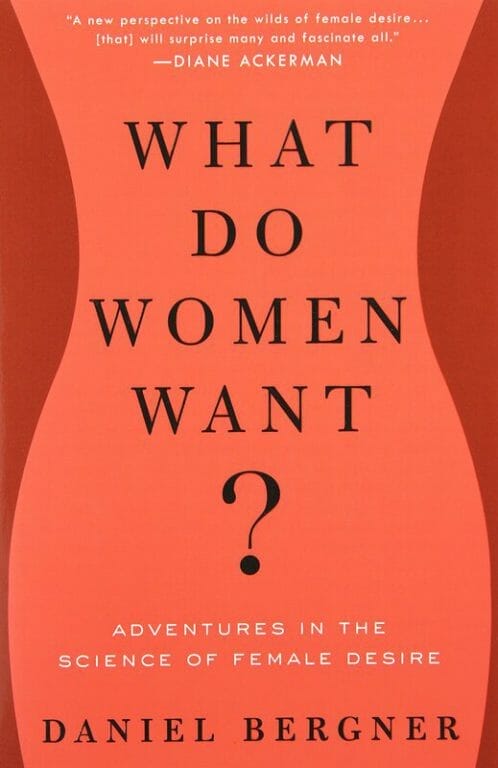
What Women Want
Table of Contents
What Women Want
As part of the International Women’s Day initiative, we are covering an article on “What Women Want”. This is based on the book “What Women Want,” by Daniel Bergner, a writer for The New York Times Magazine.
This article is for anyone who wants to:
a. understand women better
b. get new perspectives on sex and relationships
c. uncover more about one’s own sexuality

Social norms often dictate women’s sexuality, and simplify it.
Ancient texts and religions reveal that the repression of women’s sexuality has long been present since the early days. Then, in the sixteenth centure, when male scientists discovered the role of the ovum for reproduction. Because women could conceive regardless of whether they felt desire, men concluded that there is little reason to pay attention to female pleasure.
In modern times, women are supposedly the more restrained sex. This is a stereotype that that encourages women to behave in the way that we think they should. The problem hence lies: whether it is through religion, social convention or science, women are told how to feel and act. It is a combination of these influences that perpetuate the status quo.

Men and Women’s Sexual Desires
Men has long been compared to animals tamed by society, as creatures that express their true nature in socially acceptable ways, such as watching pornography or casting predatory glances at women on the street. On the other hand, women are said to long for emotional safety and monogany – the direct opposite of the wild and restive desires of men. In reality, the range and power of women’s desire might be completed understood.
Dr. Chivas, a scientist specialising in sexology conducted an experiment with a plethysmograph. This is a light sensor that could be placed inside the vagina to measure women’s reactions to provocative footages. The women watched a variety of scenes: heterosexual and homosexual intercourse, masturbation and even bonobos mating. The conclusion was astounding. Women, regardless of sexual orientation, were aroused by all kinds of footage, even images of copulating apes. Men, however, reacted along more predictable lines. This study showed that women often misunderstand their own desire.
Women’s sexuality is complicated by anatomy and social environment
Anatomy could be one factor that led to this differing awareness of women’s own sexuality. While men could easily tell that they are aroused from teenage years onwards, from how the penises grow and shrink from sexual excitement, it is often harder for women.
In additional experiments by Dr. Chivers, it was revealed that women’s desire does not necessarily fit into societal standards. This seems to debunk the assumption that the female libido thrives on emotional connection alone.
The complexity of women’s desire can be explored through their fantasties. Nine different surveys asked women if they were fantasized about being overpowered or coerced into sex. The results gathered from 355 college women revealed that 62 percent had had such fantasties at least once.
One possible explanation is that being desired is central to women’s libidos. Women’s sexual desires, according to Professor Meana, depend heavily on the extent to which they feel desired by their partner. Particularly in cultures where sex is a taboo topic, some women may find a way to embrace their own sexual drive through such fantasies, while avoiding the shame imposed on them. For example, they might fantasise about being raped, because this way they have no reason to be ashamed of wanting sex.
Viagra for men and what for women?
While men have viagra, the industry has been trying to find an equivalent drug for women. Exploring the psychological and physical issues surrounding desires, researchers have uncovered interesting results. They foudn that women’s sexual issues are usually more psychological than genital or hormonal. One study showed that the thrill of a new relationship could easily cancel out the hormonal effects.

The theory of women being more aroused when they are the object of desire seems to provide part of the explanation. Within the confines of monogamy, a woman feels that her partner is trapped and that she is no longer the object of desire. As such, her partner no longer has any choice, and so the feeling of being desire dissipates.
The point about the G-spot
Thought the G-spot has been studied since the 1940s, it still remains a mystery. During the 1980s, a book on the topic exerted that the G-spot was to be found along the interior of the vaginal front wall. According to the researchers, it induces powerful orgasms, even though its existence has yet to be scientifically proven. While this is difficult to prove, one thing is certain. Some women are able to orgasm without the assistance of any physical touch, literally thinking themself to climax! It does seem to prove that the brean is a sexual organ as power as any other.

Conclusion
In this modern day, it seems that myths and stereotypes about women’s sexuality and desire can be debunked. Women are not the less desirous sex; they may be as or even more sexually driven than men. Notwithstanding, women’s desire remains to be further researched and explored, and it is still a generally unchartered territory.
If you like this summary and want to find out more, please check out What Women Want by Daniel Bergner.
Social norms often dictate women’s sexuality, and simplify it.
In modern times, women are supposedly the more restrained sex. This is a stereotype that that encourages women to behave in the way that we think they should. The problem hence lies: whether it is through religion, social convention or science, women are told how to feel and act. It is a combination of these influences that perpetuate the status quo.
Men and Women’s Sexual Desires
Dr. Chivas, a scientist specialising in sexology conducted an experiment with a plethysmograph. This is a light sensor that could be placed inside the vagina to measure women’s reactions to provocative footages. The women watched a variety of scenes: heterosexual and homosexual intercourse, masturbation and even bonobos mating. The conclusion was astounding. Women, regardless of sexual orientation, were aroused by all kinds of footage, even images of copulating apes. Men, however, reacted along more predictable lines. This study showed that women often misunderstand their own desire.
Women’s sexuality is complicated by anatomy and social environment
In additional experiments by Dr. Chivers, it was revealed that women’s desire does not necessarily fit into societal standards. This seems to debunk the assumption that the female libido thrives on emotional connection alone.
The complexity of women’s desire can be explored through their fantasties. Nine different surveys asked women if they were fantasized about being overpowered or coerced into sex. The results gathered from 355 college women revealed that 62 percent had had such fantasties at least once.
One possible explanation is that being desired is central to women’s libidos. Women’s sexual desires, according to Professor Meana, depend heavily on the extent to which they feel desired by their partner. Particularly in cultures where sex is a taboo topic, some women may find a way to embrace their own sexual drive through such fantasies, while avoiding the shame imposed on them. For example, they might fantasize about being raped, because this way they have no reason to be ashamed of wanting sex.
Viagra for men and what for women?
The theory of women being mor earoused when they are the object of desire seems to provide part of the explanation. Within the confines of monogamy, a woman feels that her partner is trapped and that she is no longer the object of desire. As such, her partner no longer has any choice, and so the feeling of being desire dissipates.
The point about the G-spot
Conclusion
If you like this summary and want to find out more, please check out What Women Want by Daniel Bergner.









![The best facial cleansers for every skin type [Singapore Edition]](https://evx5p9hzfje.exactdn.com/wp-content/uploads/The-different-types-of-facial-cleansers-768x432.jpg?strip=all&lossy=1&sharp=1&ssl=1)